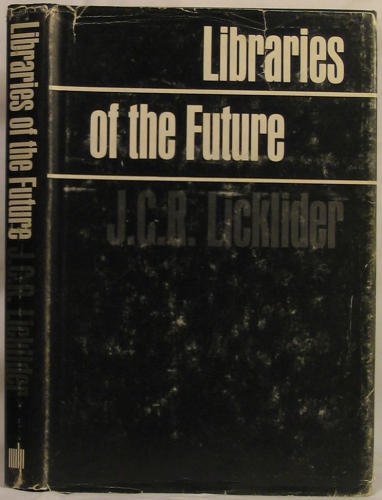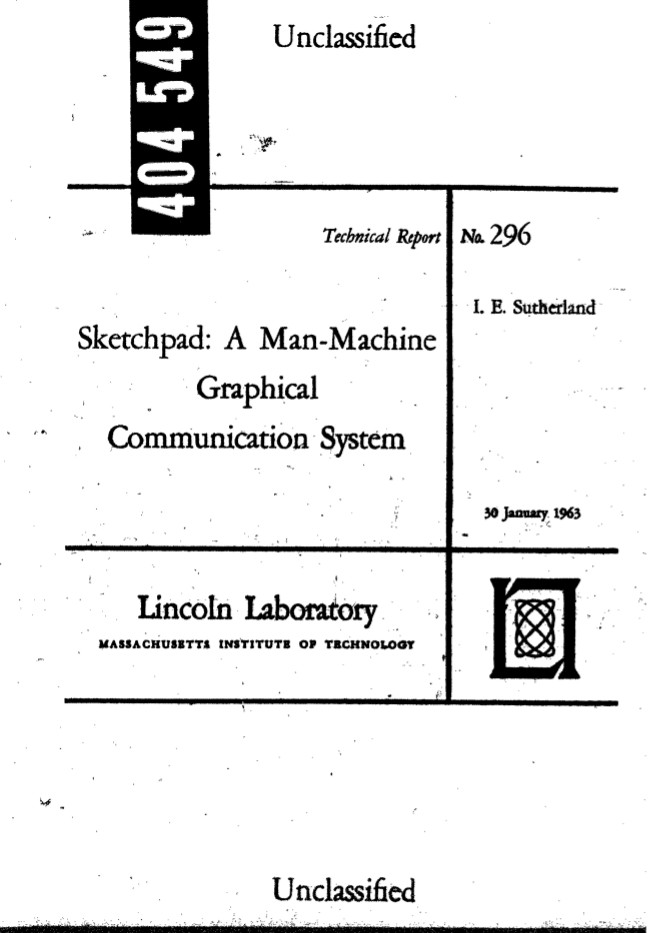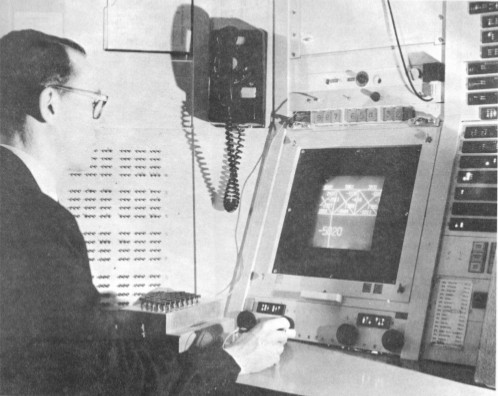J. C. R. Licklider: Libraries of the Future (1965)
Filed under book | Tags: · computing, knowledge, library, memory, technology

In this book J. C. R. Licklider discussed how information could be stored and retrieved electronically. Although he had not read Vannevar Bush’s “As We May Think,” he realized that Bush’s ideas had been diffused through the computing community enough to have provided a base for his own ideas. His theoretical information network, which he called a “procognitive system” sounds remarkably similar to Tim Berners-Lee’s World Wide Web: “the concept of a ‘desk’ may have changed from passive to active: a desk may be primarily a display-and-control station in a telecommunication-telecomputation system-and its most vital part may be the cable (‘umbilical cord’) that connects it, via a wall socket, into the procognitive utility net”. This system could be used to connect the user to “everyday business, industrial, government, and professional information, and perhaps, also to news, entertainment, and education.” (source)
Based on a study sponsored by the Council on Library Resources, Inc., and conducted by Bolt, Beranek, and Newman, Inc., between November 1961 and November 1963.
Publisher MIT Press, 1965
ISBN 026212016X, 9780262120166
219 pages
via Archive.org (where it is not available anymore)
Thomas Streeter: The Net Effect: Romanticism, Capitalism, and the Internet (2011)
Filed under book | Tags: · arpanet, capitalism, computing, history of computing, history of technology, internet, neoliberalism, technology

This book about America’s romance with computer communication looks at the internet, not as harbinger of the future or the next big thing, but as an expression of the times. Streeter demonstrates that our ideas about what connected computers are for have been in constant flux since their invention. In the 1950s they were imagined as the means for fighting nuclear wars, in the 1960s as systems for bringing mathematical certainty to the messy complexity of social life, in the 1970s as countercultural playgrounds, in the 1980s as an icon for what’s good about free markets, in the 1990s as a new frontier to be conquered and, by the late 1990s, as the transcendence of markets in an anarchist open source utopia.
The Net Effect teases out how culture has influenced the construction of the internet and how the structure of the internet has played a role in cultures of social and political thought. It argues that the internet’s real and imagined anarchic qualities are not a product of the technology alone, but of the historical peculiarities of how it emerged and was embraced. Finding several different traditions at work in the development of the internet—most uniquely, romanticism—Streeter demonstrates how the creation of technology is shot through with profoundly cultural forces—with the deep weight of the remembered past, and the pressures of shared passions made articulate.
Outstanding Academic Title from 2011 by Choice Magazine.
Publisher NYU Press, 2011
Critical Cultural Communication series
ISBN 0814741169, 9780814741160
221 pages
review (Yuenmei Wong, International Journal of Communication)
Comment (0)Ivan Edward Sutherland: Sketchpad: A Man-Machine Graphical Communication System (1963/2003)
Filed under thesis | Tags: · computing, design, drawing, interface, software, technology


This technical report is based on a dissertation submitted January 1963 by the author for the degree of Doctor of Philosophy to the Massachusetts Institute of Technology.
“The Sketchpad system uses drawing as a novel communication medium for a computer. The system contains input, output, and computation programs which enable it to interpret information drawn directly on a computer display. It has been used to draw electrical, mechanical, scientific, mathematical, and animated drawings; it is a general purpose system. Sketchpad has shown the most usefulness as an aid to the understanding of processes, such as the notion of linkages, which can be described with pictures. Sketchpad also makes it easy to draw highly repetitive or highly accurate drawings and to change drawings previously drawn with it. The many drawings in this thesis were all made with Sketchpad.
A Sketchpad user sketches directly on a computer display with a ‘light pen.’ The light pen is used both to position parts of the drawing on the display and to point to them to change them. A set of push buttons controls the changes to be made such as ‘erase,’ or ‘move.’ Except for legends, no written language is used.
Information sketched can include straight line segments and circle arcs. Arbitrary symbols may be defined from any collection of line segments, circle arcs, and previously defined symbols. A user may define and use as many symbols as he wishes. Any change in the definition of a symbol is at once seen wherever that symbol appears.
Sketchpad stores explicit information about the topology of a drawing. If the user moves one vertex of a polygon, both adjacent sides will be moved. If the user moves a symbol, all lines attached to that symbol will automatically move to stay attached to it. The topological connections of the drawing are automatically indicated by the user as he sketches. Since Sketchpad is able to accept topological information from a human being in a picture language perfectly natural to the human, it can be used as an input program for computation programs which require topological data, e.g., circuit simulators.
Sketchpad itself is able to move parts of the drawing around to meet new conditions which the user may apply to them. The user indicates conditions with the light pen and push buttons. For example, to make two lines parallel, he successively points to the lines with the light pen and presses a button. The conditions themselves are displayed on the drawing so that they may be erased or changed with the light pen language. Any combination of conditions can be defined as a composite condition and applied in one step.
It is easy to add entirely new types of conditions to Sketchpad’s vocabulary. Since the conditions can involve anything computable, Sketchpad can be used for a very wide range of problems. For example, Sketchpad has been used to find the distribution of forces in the members of truss bridges drawn with it.
Sketchpad drawings are stored in the computer in a specially designed ‘ring’ structure. The ring structure features rapid processing of topological information with no searching at all. The basic operations used in Sketchpad for manipulating the ring structure are described.” (from the Abstract)
PhD thesis
Originally submitted at the Massachussets Institute of Technology, January 1963
Technical report published by University of Cambridge, September 2003
New preface by Alan Blackwell and Kerry Rodden
ISSN 1476-2986
149 pages
Sketchpad presentation with comments by Alan Kay (video)
PDF (original thesis, 1963)
PDF (2003 edition)

